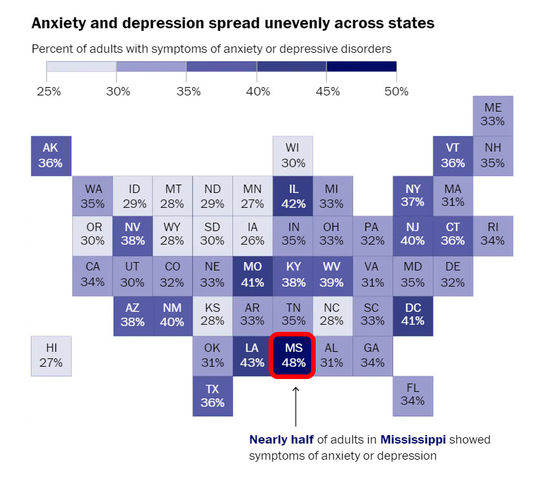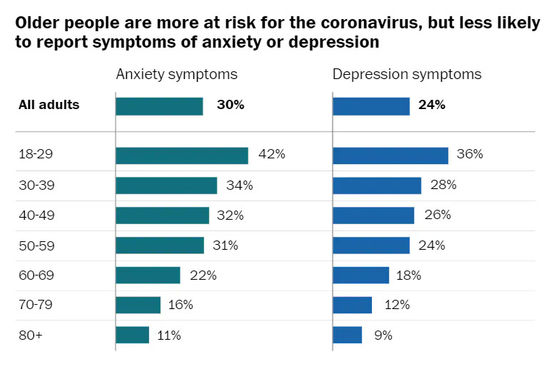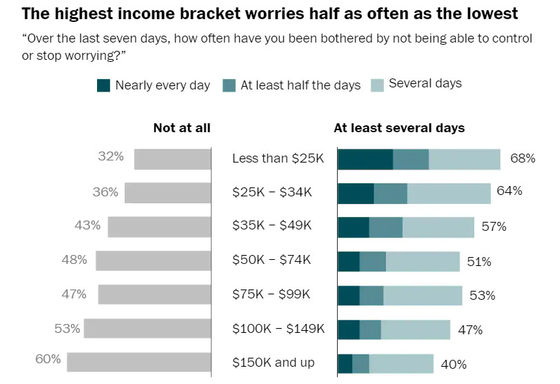Survey results that 'one-third of Americans became depressed and anxiety disorders' due to the influence of the new coronavirus

The threat of the novel coronavirus infection (COVID-19) poses a psychological burden to many people. A survey by the US Census revealed that one-third of people exposed to the new coronavirus are suffering from mental illness.
A third of Americans now show signs of clinical anxiety or depression-The Washington Post
The American Daily Washington Post calculated the percentage of Americans suffering from depression and anxiety disorders based on the results of a household survey conducted by the US Census Bureau in May. As a result, out of 100 Americans, 4 had depression, 10 had anxiety, and 20 had both. It was In other words, 34 out of 100 people suffer from any mental illness.

In addition, the percentage of people who answered 'almost every day,' 'several days,' 'more than half a day' in a survey on the number of days of feeling depressed and despaired was similar to that of the same survey conducted in 2013 and 2014. It seems to have doubled.
Even if you say Americans, the aspect varies greatly depending on the region. Looking at the figure below, which shows the proportion of people with both depression and anxiety disorders by state, the northwestern United States has a relatively low proportion, while the southeastern states have a high proportion. I understand. Especially in the US state of Mississippi, nearly half of the people suffered from depression and anxiety.

It also made a difference depending on the age. In the graph on the left that shows people with anxiety disorders by age group and the graph on the right that shows people with depression symptoms by age group, both of them show mental illness. The percentage is low.

'These results represent an exacerbation of the existing problems of widespread depression, stress, and suicide among adolescents,' said the Washington Post. Paul Gionfriddo, a representative of Mental Health America, a non-profit mental health organization, said, “We are looking to reopen schools and colleges, but to do that we need to consider the mental health of young people. There's been a lot of discussion about the distance and the number of students in the classroom, but nothing about mental health support. '
COVID-19 also highlights the problem of rich and poor. Below is a graph that divides the proportion of answers to the question 'How often have you been able to stop thinking about your worries in the past 7 days?' is. If you look at the graph on the left, which shows those who answered 'There was no such thing,' it can be seen that the higher the income, the smaller the proportion of those who are in trouble. In contrast, looking at the graph on the right, which shows people who said they had had at least a few days, we can see that the lower the income, the greater the proportion of people who are in distress.

Maria Ochelond, a psychiatry professor at the University of Pennsylvania, said, 'In the light of the current situation, it would be strange not to feel anxious or to squeeze in. COVID-19 can be seen differently from hurricanes, earthquakes, and terrorism. I can't even touch it. And yet, the fear of COVID-19 is everywhere. '
Related Posts:
in Note, Posted by log1l_ks







